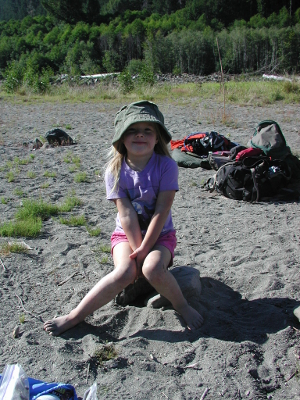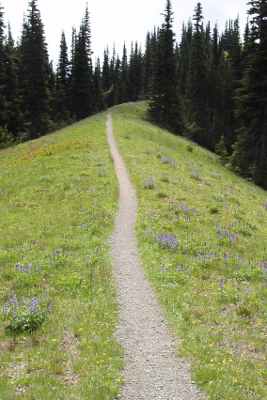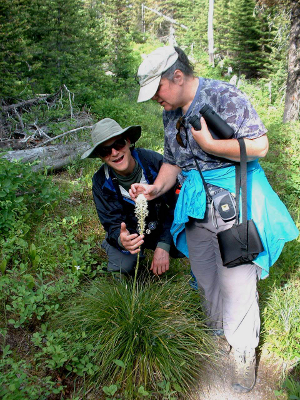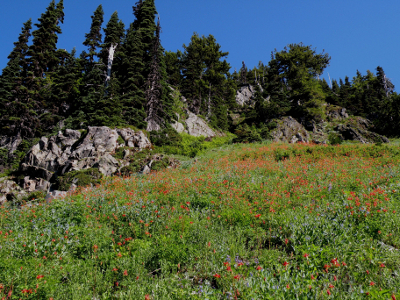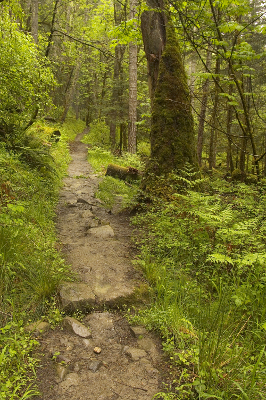
Advice on appropriate ONP hiking gear for you to pack
Pack for day hikes in Olympic National Park where weather could change rapidly and include fog or rain. First is a short list of what not to bring when hiking in ONP.
Skip the packing list for now and explore other free resources for planning your Olympic National Park vacation.
What not to bring when exploring Olympic National Park & tidepools
Pets
Pets are not allowed on Olympic National Park trails. This includes the walking trails around the Lake Crescent Lodge - both to protect wildlife and to protect your pets from the wildlife. Help to leave no trace in the tidepools by avoiding bringing your dog tidepooling. An exception to this general rule is that Olympic National Park tours with ExperienceOlympic can oraganize Elwha River tours that are dog-friendly.
Firearms
Firearms and other unnecessary heavy items should not be included when you pack for your Olympic National Park hike.
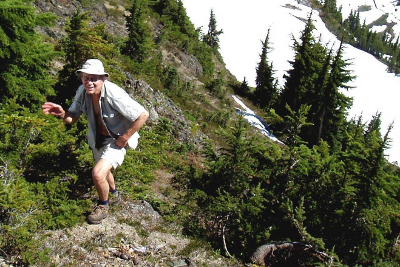
Cell phone
Cellular service will likely be spotty during Olympic National Park hiking adventures, especially in the river valleys. To conserve your battery for an extended trip, it is best to turn off your phone entirely or put your phone in airplane mode and turn off both data and wifi.
What to bring when hiking in Olympic National Park
Pack your hiking shoes, extra socks, hiking poles and traction devices for Olympic National Park hiking
Sturdy shoes which are comfortable for walking, with good tread and insoles are essential to pack for hiking in Olympic National Park. Also, you should always bring extra socks and these should ideally be a good wool blend (see layers of clothing below). If you are hiking in the Olympic mountains, you should ideally use hiking (trekking) poles. Hiking poles can help with balance and have been shown to decrease soreness in the days following a hike if used properly.
Winters in Olympic National Park can be relatively mild given the close proximity to the Pacific Ocean and Salish Sea. However, you may still encounter snow and ice on hiking trails in the Olympic mountains at all times of the year, especially on south-facing slopes. Traction devices on your shoes - similar to tire chains for your car, can really help you get a grip. They don't have to be fancy and you can pick them up in Port Angeles at Brown's Outdoor (if needed based on the time of year) when you pick up your Olympic National Park wilderness camping permit.
Pack your camera for your Olympic National Park day hike
With charged batteries and a dry bag
Pack layers of clothing for hiking in Olympic National Park
Bring at least two layers of pants, several shirts and sweaters that you can wear at the same time, and gloves on day hikes in Olympic National Park, especially for longer day hikes and backpacking adventures. Gaiters can help to keep your feet warm, even if your socks and shoes are wet from hiking during or after rainfall and are great for muddy day hikes like what will be experienced all year round when hiking to Shi Shi Beach in Olympic National Park.
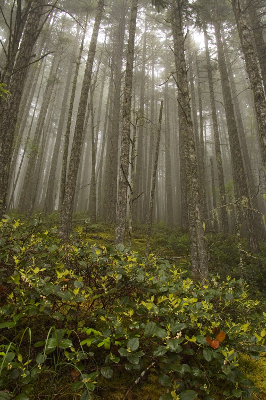
Pack non-cotton fabric for Olympic National Park day hikes
One practical reason to wear clothing while on Olympic National Park day hikes is to provide insulation. Dry cotton clothing does this, but wet cotton clothing provides no insulation (some people say it is worse than being naked). On your Olympic National Park day hike, you need to stay warm even when your clothes are wet. Cotton makes you cold when it is wet, does not dry under humid weather conditions, and increases your discomfort and vulnerability to hypothermia while hiking in Olympic National Park.

So ideally the layers of clothing that you bring on day hikes in Olympic National Park should NOT be made of cotton. Wool, silk, and synthetic fabrics (like nylon) keep you warm even when wet. These fabrics also dry faster than cotton so consider packing them for Olympic National Park hiking, especially for longer day hikes and backpacking adventures. If you are only planning on short day hikes during July and August, cotton can be great so you don't need to necessarily strike it from your packing list.
Pack raingear for hiking in Olympic National Park
Weather conditions can change rapidly, especially in the mountains during Olympic National Park backpacking trips, so bring a rain jacket regardless of the time of year. If you have rain pants, bring those too - more importantly do not pack only cotton pants like jeans. Water-resistant ski pants can sometimes work in lieu of rain pants while hiking in Olympic National Park for short day hikes with little elevation gain (otherwise ski pants are too hot for hiking).
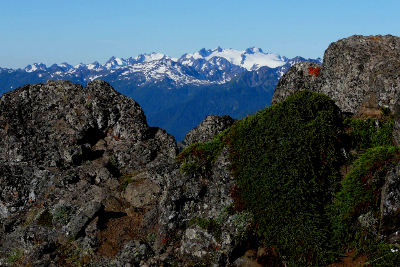
Pack hats and sunglasses for Olympic National Park hiking
Both a sun hat and a warm hat are helpful items to include for fun and safe day hikes in Olympic National Park. It is often windy in the mountains so a baseball cap with a tight fit or a sun hat with a neck strap is helpful. Sunglasses are also nice for sunny days especially when hiking in Olympic National Park over snow.
Make clothing choices to deter fall foraging wasps on your Olympic National Park hike
In general, there are very few nuisance insects that impact how you pack for Olympic National Park hiking. So don't even bother with packing toxic repellents unless you are camping next to a high lake in the summer. However, certain clothing and scented choices can help to minimize the likelihood of contact with wasps, especially during the fall, according to Bechinki (2009). Wear close-fitting white or tan layers of clothing and avoid loose-fitting bright-colored layers of clothing especially light blue, pink, red, or orange. Also minimize use of scented body items like perfumes, as these scents can be highly attractive to foraging wasps on Olympic National Park day hikes.
Medications for Olympic National Park hiking
Essential Olympic National Park hiking gear includes any medications that you have to take that day, so that you have it with you just in case an emergency arises. If you have asthma, bring your inhaler. Everyone should consider carrying a small first aid kit with antihistamine (like diphenhydramine), ibuprofen (brand name "Advil"), and any other over-the-counter medications you consider useful for emergencies on Olympic National Park day hikes.
Bring medications for any life-threatening conditions. For example, people with known anaphylaxis reactions should carry diphenhydramine (brand name "Benadryl") and epinephrine (brand name "EpiPen"). Know how to properly use any first aid supplies, especially medications, that you carry on day hikes in Olympic National Park. It might be tempting to leave medications in your car for a day hike, but if you are hiking in Olympic National Park more than a mile, are alone, or are off-trail - don't leave medications in your car.
Ten essentials for Olympic National Park hiking, especially for backpacking
Consider hiking in Olympic National Park with the ten essentials, which include water, food, map and compass, headlamp, knife, and matches. The other Olympic National Park hiking essentials have already been discussed. Fresh water encountered during Olympic National Park day hikes can carry giardia (an intestinal parasite also called "Beaver Fever") so do not drink from streams or lakes without using a water treatment method.

Olympic National Park hiking citation
Bechinki, Edward et al. (2009). Homeowner Guide to Yellowjackets, Bald-Faced Hornets, and Paper Wasps (Accessed Dec. 11, 2011).

